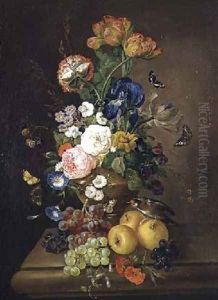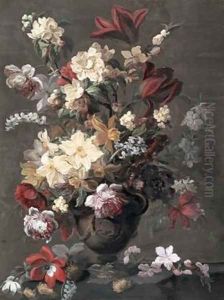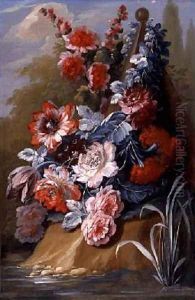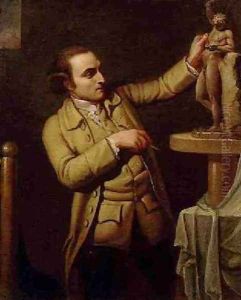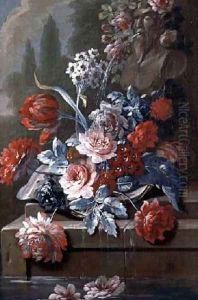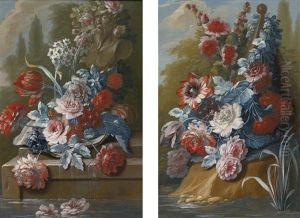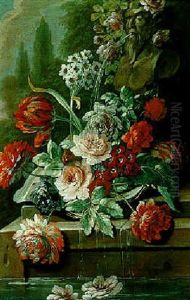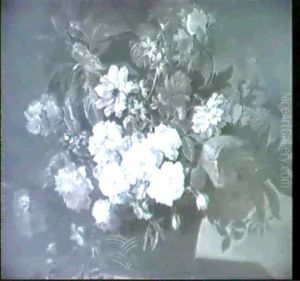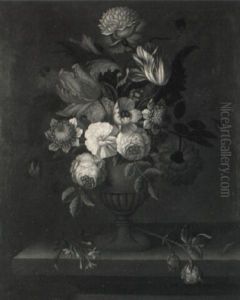Mary Moser Paintings
Mary Moser was a prominent English artist born in 1744 in London, England. She was one of the most celebrated female painters of her time, known especially for her exquisite flower paintings and as a pioneering woman in the British art scene of the 18th century. Moser grew up in an artistic environment; her father, George Michael Moser, was a Swiss-born enamel painter and a founding member of the Royal Academy of Arts in London. This vibrant artistic milieu profoundly influenced her, and she showed an early talent for painting.
Moser became one of only two female founding members of the Royal Academy in 1768, alongside Angelica Kauffman. Her acceptance into this prestigious institution was a significant achievement, reflecting not only her exceptional skills as an artist but also the respect she garnered among her peers. During her lifetime, Moser was renowned for her floral still lifes, a genre that was highly popular in the 18th century. Her work was characterized by its meticulous detail, vibrant colors, and dynamic compositions, which captured the beauty and intricacy of flowers with remarkable realism.
Despite the challenges she faced in a male-dominated art world, Moser enjoyed a successful career. She received numerous commissions from the British aristocracy, including Queen Charlotte, for whom she contributed to the decoration of the Frogmore House by painting a room that came to be known as 'Mary Moser Room'. This project was one of the highlights of her career, showcasing her ability to work on a larger scale and cementing her status as a leading artist of her time.
Throughout her life, Moser was an active and influential member of the Royal Academy, exhibiting regularly at its annual exhibitions. However, her involvement with the Academy diminished after her marriage to Captain Hugh Lloyd in 1793, as married women were expected to withdraw from public life. Despite this, she continued to paint and contribute to the art world until her death in 1819.
Moser's legacy is significant, not only for her contributions to the genre of flower painting but also for breaking barriers for women in the arts. Her work paved the way for future generations of female artists, and today, she is remembered as a pioneering figure in British art history.
